Can Dogs Skydive?
General
 Posted by: Curtis White
1 year ago
Posted by: Curtis White
1 year ago
We’ve all heard the old adage, “When dogs fly!” Okay … maybe that’s not exactly right, but a lot of people do wonder: can dogs skydive? And it makes sense! History has proven that there’s a reason dogs are called man’s best friend. They’re often our emotional support, our coworkers, and our adventure buddies. Certain dogs have even done things most humans can’t even do!
So, can dogs go skydiving? The answer might surprise you. Skydiving dogs are indeed a real thing, though it’s not as simple as a dog parachuting with its owner. Military dog skydiving is the most common type of canine jumping, but some dogs fly just for fun.
In this article, we’ll answer all of your burning questions about flying pups, including:
- Has a dog ever done a skydive?
- How are dogs trained to skydive?
- Do military dogs jump out of planes?
- And even, can cats skydive?
Skydiving is so much more than just falling through the sky – one of the best parts about the sport is how creative you can get! And sometimes, that means bringing your best friend from another species along for the ride. Read on to find out what it takes for a dog to be a flying machine!
Dog Safety and Risk Mitigation
We might not like to admit it (or maybe we sing it from the high heavens), but some of us love dogs even more than we love humans. And the idea of something happening to our beloved pooch is enough to send us into a frenzy of protective measures.
This is especially true for dogs who participate in dangerous jobs and extreme sports. Human skydiving culture is centered around safety and mitigating risk, and it’s no different when we have canine passengers in tow. Extensive evaluations, extra training, and specialized equipment are all required for a four-legged flight.
Because of the added safety considerations and increased risk involved, you don’t see many dogs tagging along on civilian skydives. The Federal Aviation Administration (FAA) isn’t all that fond of cross-species skydiving. Most flying furry friends participate in specialized roles such as military operations or search and rescue missions. These dogs are highly trained and work alongside professional human skydivers who are experienced in jumping with dogs.
For both civilian and military canines, the process of going skydiving involves careful evaluation and preparation. Not all dogs are suitable for extreme activities and the dogs that do participate are carefully selected and trained to ensure both their safety and well-being and the safety of their human counterpart.
It’s important to understand the dog’s temperament and behavior in high-stress situations before taking it out of an airplane – it wouldn’t be fun for anyone if the dog was a nervous wreck the whole time. And you wouldn’t want a dog having a full-on panic attack attached to you while you’re trying to safely skydive yourself, either. Driving with a high-strung canine is difficult enough, now imagine doing that while falling through the air!
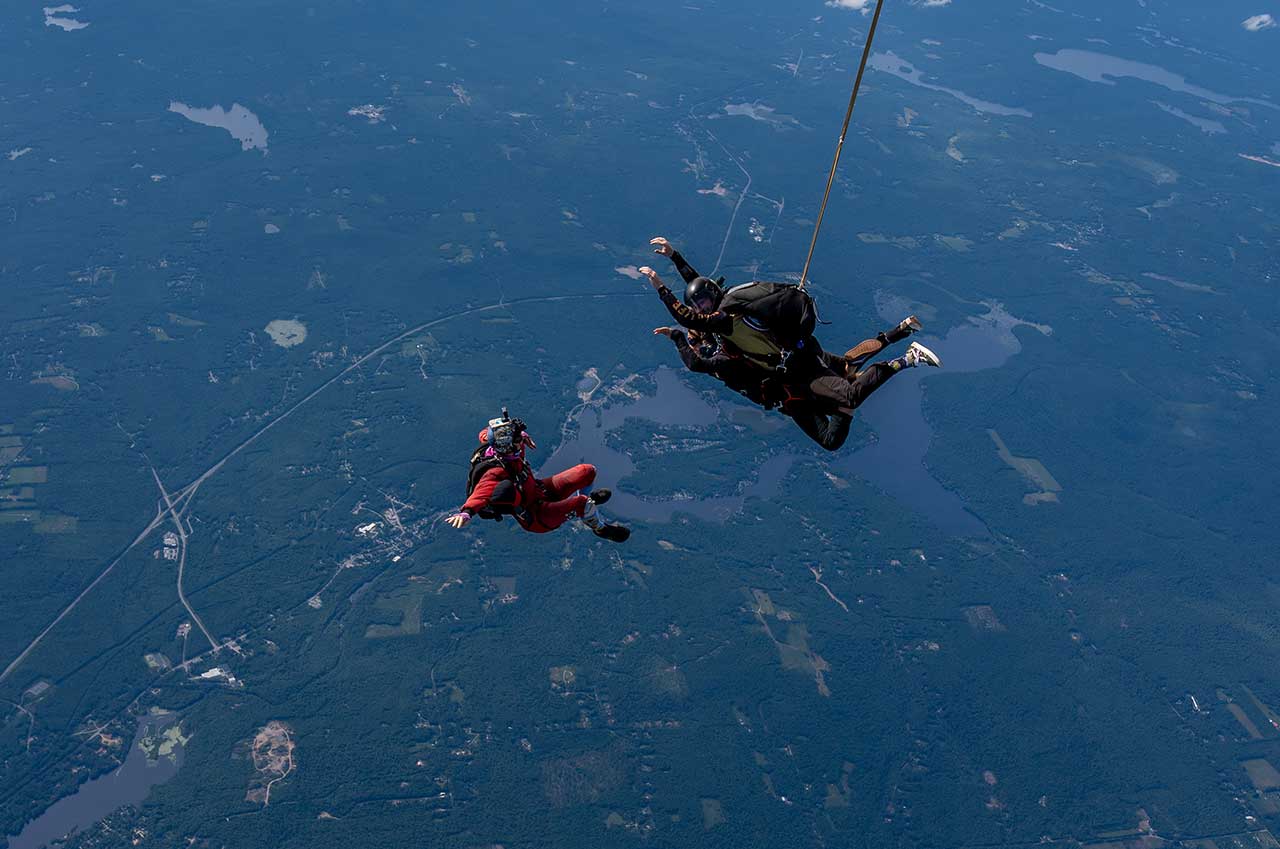
Not Your Grandma’s Dog Training
Once a capable dog has been chosen based on breed, age, and temperament, it’s time to get things rolling. Training dogs for skydiving, especially for military or search and rescue operations, is a complex and gradual process that must be approached with patience.
First of all, basic obedience training and handling skills are a must. If a dog can’t even obey the typical sit and stay command, they certainly can’t handle the enhanced requirements of skydiving. From there, gradual acclimation to heights, loud noises, and other sensory stimulations will help with the dog’s behavior and reaction in the moment.
Dropzones are loud, bustling places. Airplane engines, swooshing nylon, raucous pre- and post-jump conversations, bodies crammed into plane cabins, 120 mph wind: these are all things that a dog will experience on every jump and can trigger a stress response if they aren’t acclimated. For a dog to safely skydive, the experience must feel as normal as possible in their cute little pup brain.
And if all that sounds like a tall order, military and special operations dogs have even higher expectations. In addition to being capable of staying calm throughout the jump, they have an entire mission to complete after they land! That means they have to remember and execute any training that they received about their overall tasks AFTER flying through the air at 120 mph.
Some humans can’t even do that!
Specialty Skydiving Gear for Dogs
A pretty obvious accommodation that must be made for skydiving dogs is the gear. And this isn’t something you can find at your local pet store, or parachute gear store for that matter. Dog bodies are constructed quite a bit differently than human bodies, so the harness a pooch wears to skydive has to be specially made for their size and shape. They even need miniature goggles that are compatible with their eyes and snout! Talk about adorable.
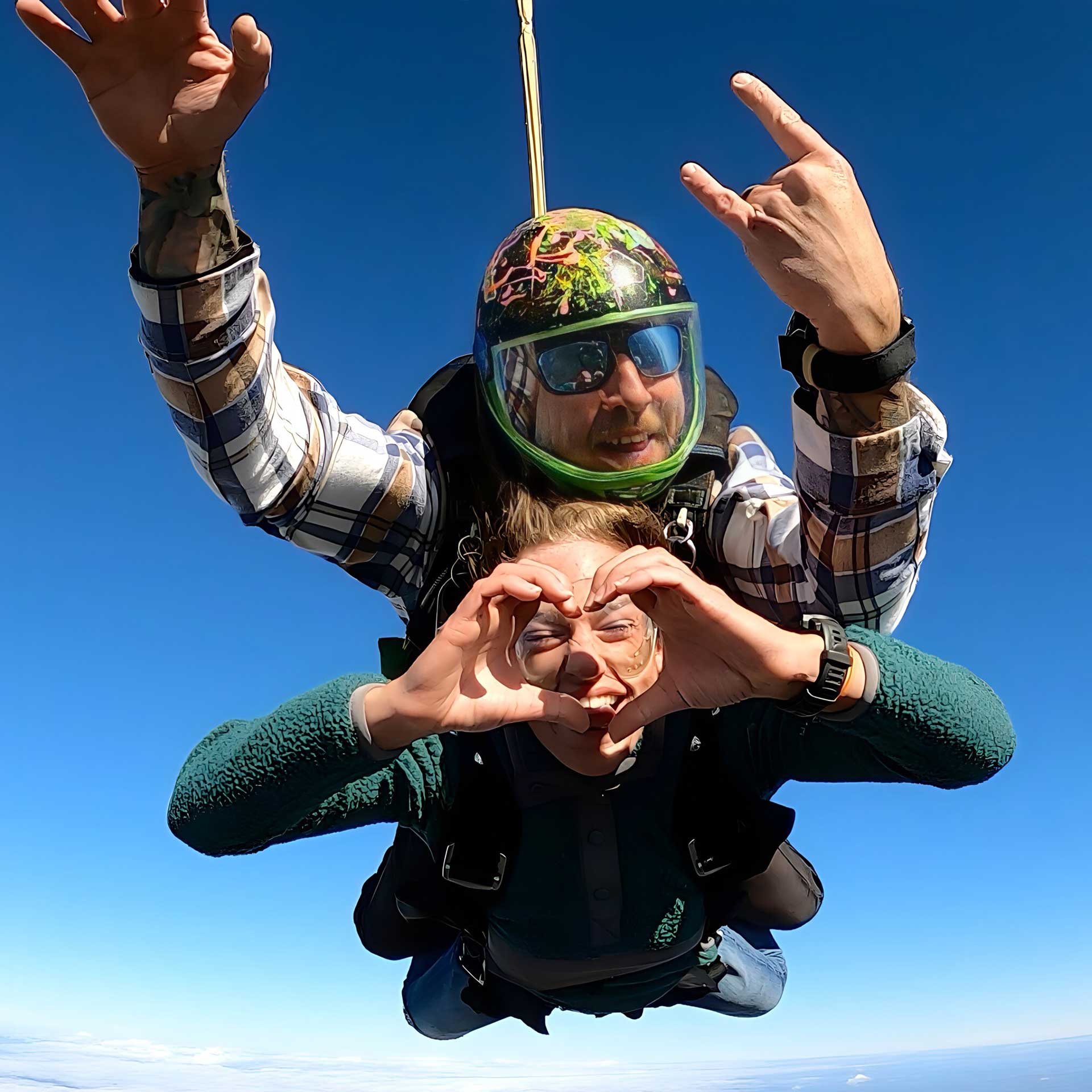
And even more effort has to be made for dogs that skydive for a living with the military. They often require additional equipment like Kevlar vests and other accessories relevant to their mission. Sometimes they even need supplemental oxygen for HALO jumps!
The military invented their very own harness just for the furry soldiers in their ranks. The original design called the Working Dog Harness, or K9A, was created in 2012 and was a basic harness that left all four legs dangling in the wind. In 2020, Paratec updated the design to the K9F, which wraps the dog’s legs into a lying position and protects them from broken bones in the event of hard landings.
Of course, just like with human skydiving gear development, the few civilian dogs that skydive borrow their equipment design inspiration from their military mutt pals!
Can Cats Skydive?
This question and answer are a bit of a red herring. There has been exactly one skydiving cat on record – a brave Russian feline named Malysh. The cat’s owner reported that Malysh enjoyed the experience, although there isn’t footage of any jumps Malysh subsequently made.
What is interesting about cats as it (sort of) relates to skydiving is their terminal velocity. Cats have a relatively large surface area compared to their weight, so they can slow themselves down fast when falling from a significant height … and land on their feet! Research says that the average cat has a terminal velocity of about 60 mph in contrast to the average human’s 120 mph.
Animal Companions at the Dropzone
If there’s any overarching message in this article, it’s that a dropzone isn’t the best place for most pets. There are the special few that are predisposed to a life of adventure, but, in general, dogs don’t react well to the environment of a dropzone.
Let’s not forget the whole point of you being there is to have fun and get away from life for a while! You’ll have enough to focus on with your jump, you don’t want to have to worry about your dog on top of it. It’s best to just leave your pup at home so that both you and your dog can have a great day.
If you and your fur pal are attached at the hip, though, you can bring your dog to Skydive New England – as long as s/he plays well with others and stays on a leash. Note that dogs are never permitted on the airfield.
Even if you can’t bring your furry friend along for the ultimate ride, you can certainly come make a skydive with all of your favorite humans! Blue skies!
Categories:
You May Be Interested In:

The Skydiving Adrenaline Rush: A Thrill Like No Other!
1 month ago by Curtis White

What Is Static Line Skydiving? Your Guide to Static Line Jumps
2 months ago by Laura Morris

How to Get into Wingsuiting: Your Guide to Wingsuit Flying
3 months ago by Curtis White
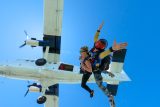
Skydiving Motion and Altitude Sickness: Tips to Stay Comfortable
4 months ago by Laura Morris
Enter to Win a Free Skydive
Join our email list and enter to win a free tandem skydive. Drawings in April and December; winner announced on social media.
You’ll get a $10 coupon toward a tandem just for signing up! Must be 18 and under 240 lbs to jump.
*By submitting this form, you are consenting to receive marketing emails from Skydive New England, 40 Skydive Lane, Lebanon, Maine 04027. You can revoke your consent by using the SafeUnsubscribe link located at the bottom of every email. Emails are serviced by Constant Contact.
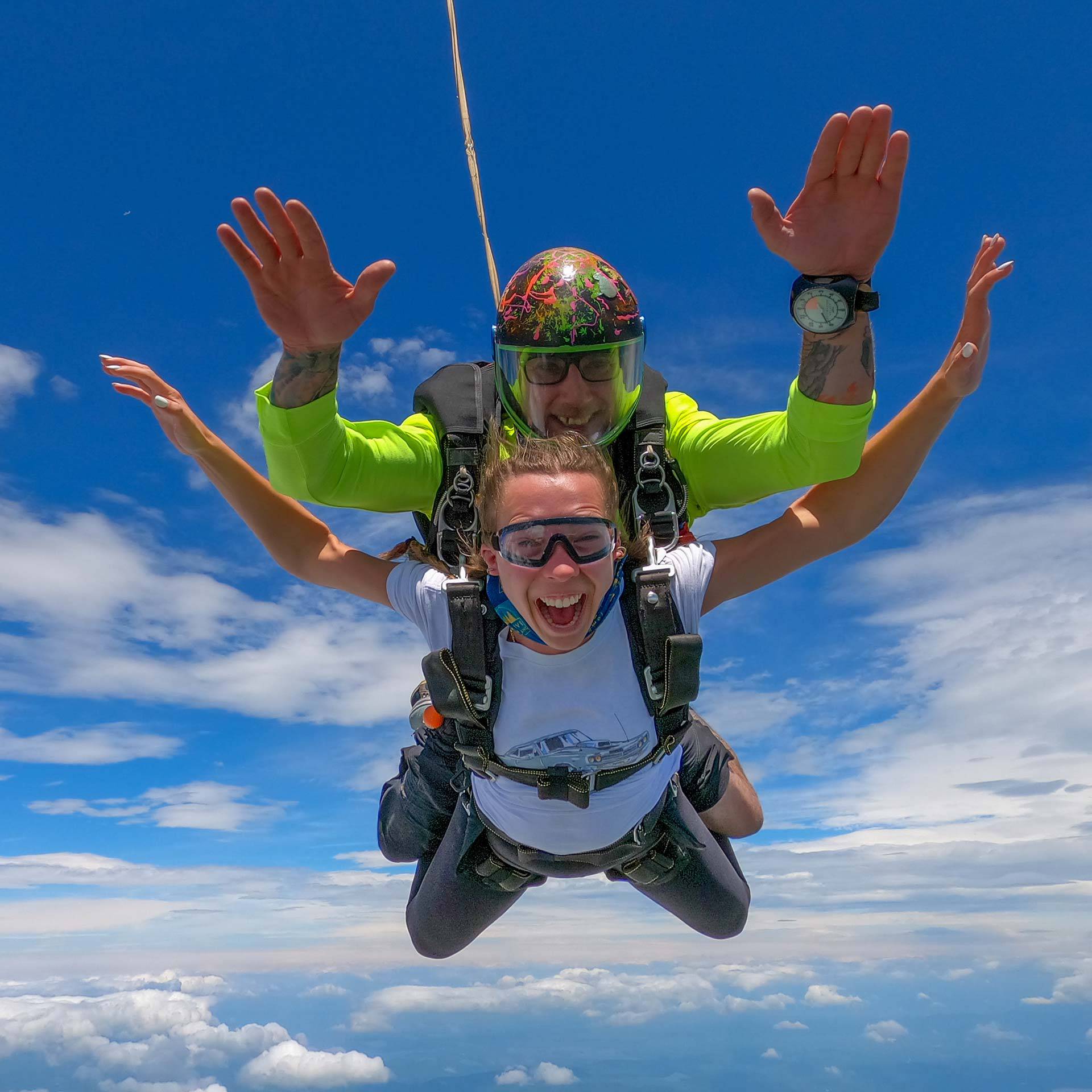
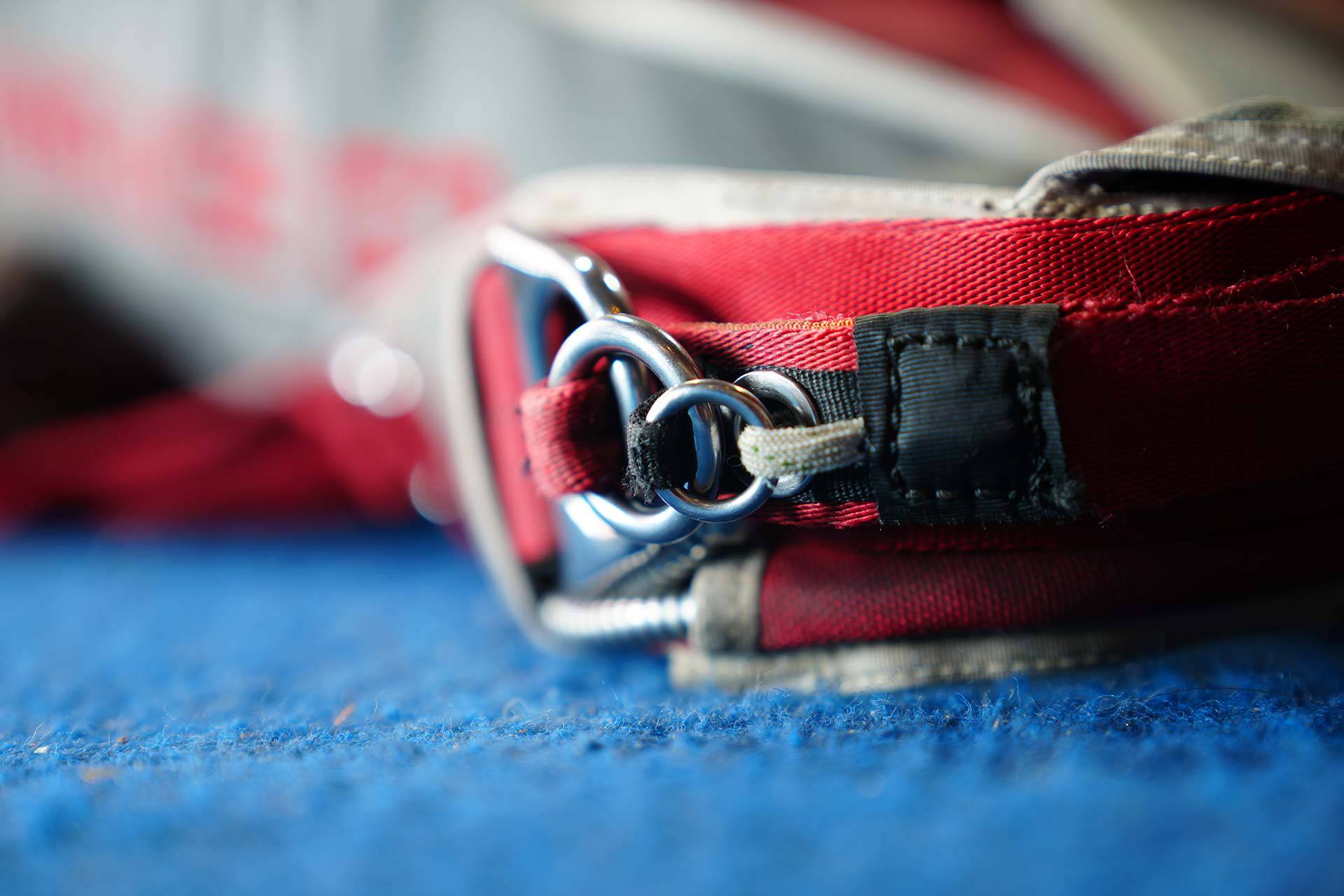
Even More Wicked-Fun Than It Looks!
Come see why the biggest DZ in New England is also the best.
